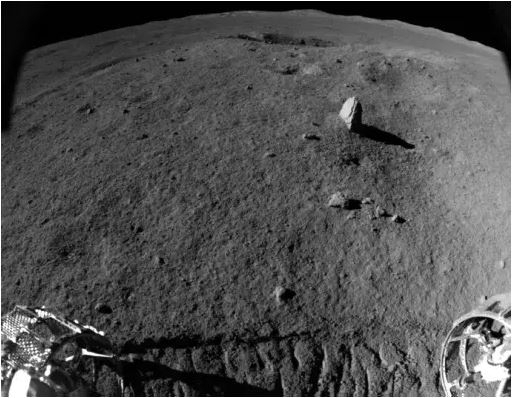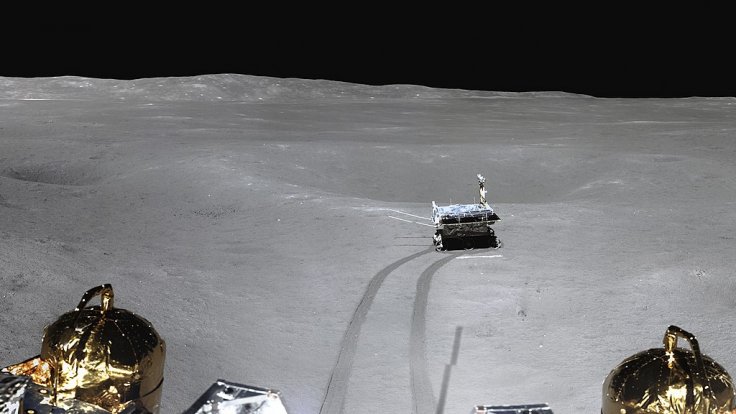China has been operating a rover, known as Yutu 2, to explore the far side of the Moon. The rover arrived on the lunar surface while being attached to the Chang'e 4 lander. Reports revealed that the rover made an interesting discovery on the lunar surface that Chinese scientists call a "milestone".
According to the Chinese state-run media outlet Xinhua, Yutu 2 river resumed its activities on February 6 after hibernating during the severe cold of the lunar night. Mission scientists and the rover drive team found an elongated rock that was worth closer inspection.

The Investigation
According to the team, it plans to aim for a close encounter and analyze the rock using the Visible and Near-infrared Imaging Spectrometer (VNIS) instrument aboard Yutu 2. VNIS detects light scattered and reflected off materials to gain more knowledge about their makeup.
This instrument has been used to explore and investigate other rocks, as well as samples of regolith along the rover's path through the Von Karman crater—which is located in the southern hemisphere on the far side of the Moon. As of now, those investigations revealed the existence of interesting melted glass specimens and some materials which most likely came from the lunar mantle.

The interesting rock on Moon, discovered by the Chinese rover, appeared to have a shard-like shape and is sticking out of the ground. Since the rock is still holding the same shape and features a pronounced ridge near the rock's edge, the scientists assume that it is geologically young.
Dan Moriarty, NASA Postdoctoral Program Fellow at the Goddard Space Flight Center in Greenbelt, Maryland, told Space.com: "Repeated impacts, stresses from thermal cycling, and other forms of weathering on the lunar surface would all tend to break down rocks into more-or-less 'spherical' shapes, given enough time."
Moriarty said: "I would definitely guess an origin as impact ejecta from some nearby crater."
Scientists believe that rocks with such shape could have been created through spallation—a process in which impact fragments of rock are blown off the nearby surface avoiding the same sort of shock pressure which the immediate impact area experience. However, scientists have planned to conduct more investigations to find a conclusive answer.









